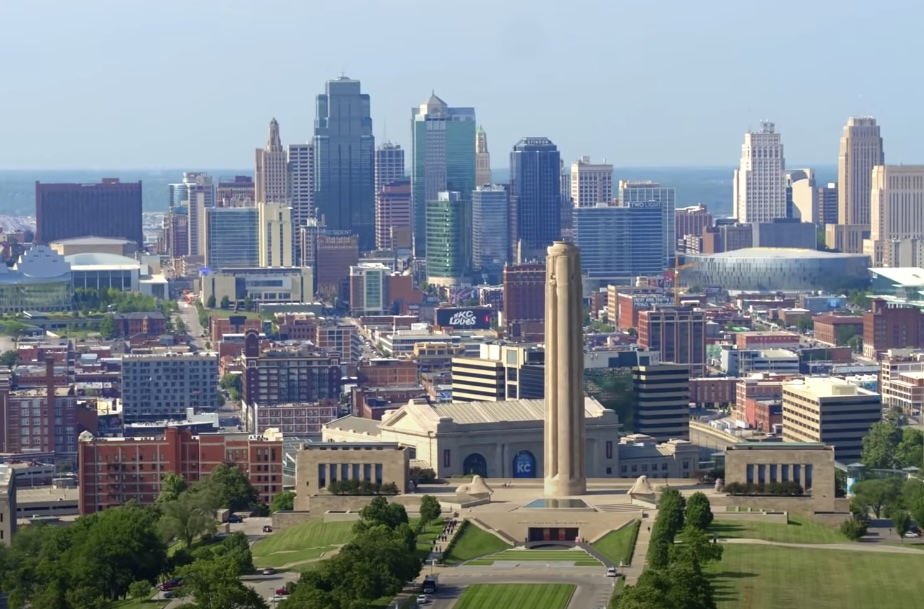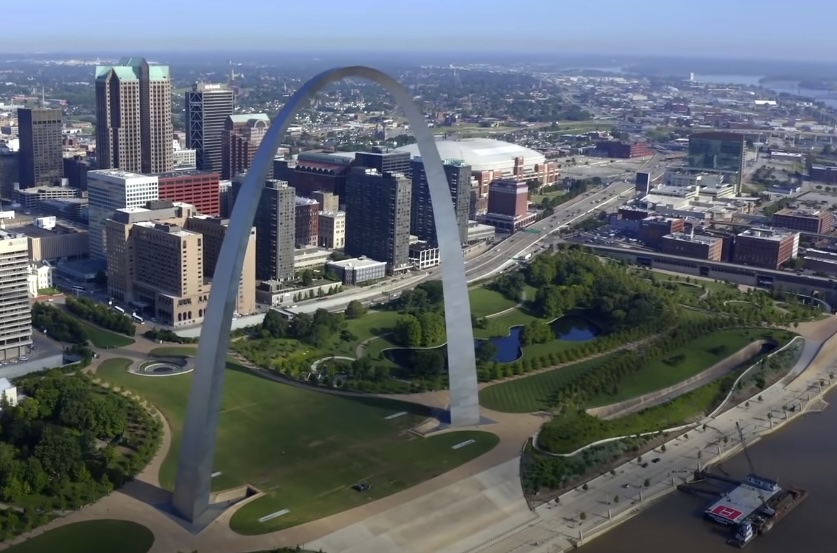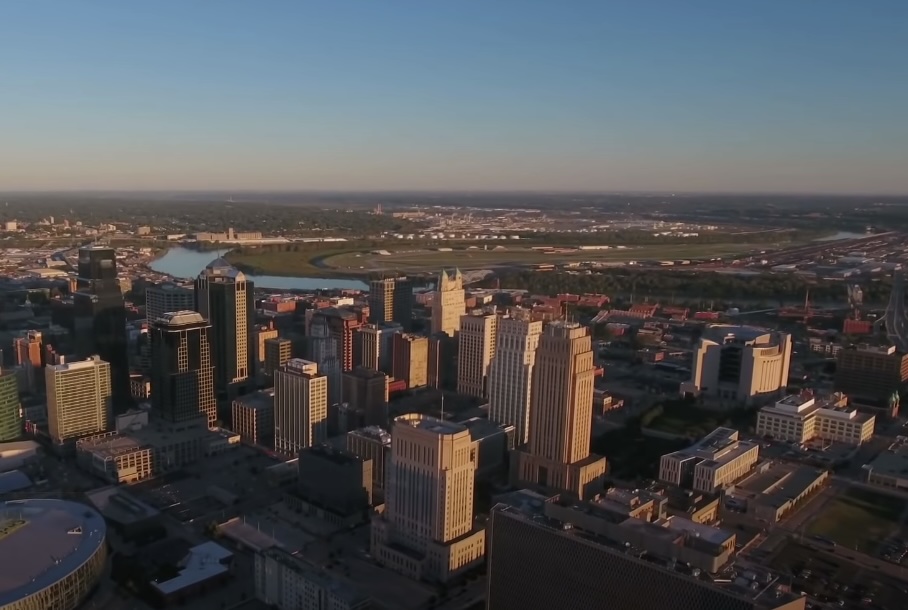The altitude of a city is an important factor in shaping its character and climate. We aim to explore the intriguing influence of elevation on Kansas City, a unique metropolis sprawled across Missouri and Kansas that boasts distinct features molded by this attribute.
Understanding Kansas City’s Elevation

On average, Kansas City’s height is around 910 feet above sea level. However, it is important to note that this value only shows the average and doesn’t account for the variations in terrain across the area.
Highest Point
Kansas City boasts a remarkable elevated landmark known as Blue River Glades, towering at an impressive altitude of 1,050 feet above sea level. This breathtaking summit commands astonishing panoramic vistas of the neighboring terrain and is highly favored by avid nature lovers and hikers who flock to this destination.
| Location | Elevation (Above Sea Level) |
| Blue River Glades | 1,050 feet |
Lowest Point
Conversely, the lowest point in Kansas City can be found along the Missouri River, where the elevation dips to approximately 750 feet above sea level. The proximity to a major waterway has significant implications for the city’s history, transportation, and flood management strategies.
| Location | Elevation (Above Sea Level) |
| Along Missouri River | 750 feet |
Impact on Landscape and Environment
The variation in elevation across Kansas City plays a pivotal role in shaping the diverse landscapes and ecosystems found in the region. Here are some key ways in which elevation impacts the lay of the land:
- Rolling Hills and Plateaus: The higher elevations, such as Blue River Glades, contribute to the presence of rolling hills and plateaus, offering spectacular vistas and opportunities for outdoor activities like hiking and biking.
- River Valleys: Lower elevations, especially along the Missouri River, create river valleys that are susceptible to flooding during heavy rains. This necessitates robust flood mitigation and management strategies for the city.
- Climate Variations: Elevation differences also influence local climate patterns. Higher elevations tend to be slightly cooler than low-lying areas, leading to variations in temperature and precipitation across the city.
- Ecological Diversity: The diverse elevation levels give rise to a variety of ecosystems, supporting a wide range of flora and fauna. Conservation efforts in Kansas City often consider these elevation-driven variations in biodiversity.
Urban Planning and Infrastructure
Understanding the city’s elevation is crucial for urban planning and infrastructure development. It helps city planners make informed decisions about drainage systems, road construction, and building codes. Moreover, it plays a role in determining the suitability of certain areas for residential or commercial development, as areas with higher elevations may have different soil characteristics and construction requirements.
Recreation and Tourism
The elevation variations in Kansas City make it an appealing destination for outdoor enthusiasts and tourists. Hiking trails, parks, and recreational areas take advantage of the diverse topography, providing opportunities for residents and visitors to explore and enjoy the natural beauty of the region.
Impact of Elevation on Kansas City’s Climate

Elevation serves as a crucial factor influencing the climate of Kansas City, significantly affecting temperature and precipitation patterns within the region. Understanding these elevation-related influences is essential for comprehending the city’s weather dynamics. In this comprehensive overview, we will delve into the profound impact of elevation on Kansas City’s climate.
Kansas City’s Climate Overview
Kansas City experiences a continental climate characterized by distinct seasonal variations:
- Summer: Hot and Humid
- Autumn: Mild and Pleasant
- Winter: Cold and Dry
- Spring: Mild and Variable
Elevation and Temperature
Elevation plays a pivotal role in shaping temperature variations across Kansas City:
- Higher Elevations: Regions situated at higher elevations within the city, exemplified by the Blue River Glades, experience cooler temperatures compared to their lower-lying counterparts. This cooling effect is especially noticeable during the sweltering summer months, providing a reprieve from the heat.
- Lower Elevations: Conversely, areas at lower elevations, particularly those in proximity to the Missouri River, typically exhibit warmer temperatures. These areas often endure higher heat levels during the summer due to the heat-retentive characteristics of lower-lying terrain.
Elevation and Precipitation
Elevation also exerts a notable influence on precipitation patterns within Kansas City:
- Higher Elevations: Elevated areas within the city generally receive slightly more precipitation compared to their lower-lying counterparts. The elevation-induced cooling effect can lead to increased condensation and cloud formation, resulting in slightly higher levels of rainfall.
- Lower Elevations: Lower elevations, especially those near the Missouri River, usually experience slightly less precipitation. The warming effect in these regions can lead to drier conditions, particularly during the summer months, when occasional droughts may occur.
Microclimates Within the City
The varying elevation levels across Kansas City give rise to microclimates within the city. Even minor changes in elevation can lead to noticeable differences in temperature and precipitation. Understanding these microclimates is essential for predicting daily weather conditions and planning outdoor activities effectively.
Practical Implications
The impact of elevation on Kansas City’s climate carries several practical implications:
- Appropriate Dressing: When preparing for outdoor activities, it’s crucial to consider the elevation of your chosen destination within the city. Higher elevations may require warmer attire, even during the summer, while lower elevations may necessitate lighter clothing.
- Water Management: Areas located at lower elevations, especially those near the Missouri River, should pay close attention to water management during heavy rainfalls or potential flooding events. Elevated regions may experience slightly lower rainfall levels.
- Microclimate Awareness: Residents and businesses should be aware of the microclimates present in their specific area. This knowledge can influence decisions related to landscaping, agriculture, and energy consumption.
- Tourism and Recreation: Visitors interested in outdoor activities should explore the various elevations within Kansas City to find the climate that best suits their preferences. This could include enjoying cooler hikes in higher elevations or basking in the warmth of lower-lying regions.
Elevation and Urban Development in Kansas City
Kansas City’s elevation has significantly influenced its urban development in several ways:
Street Layout
The topography of Kansas City has had a profound impact on the layout of its streets. The city, like many others, exhibits a diverse range of elevations, resulting in varying street patterns:
- Higher Elevations: Areas situated at higher elevations often feature winding roads that follow the natural contours of the terrain. These roads may provide elevated vantage points, offering picturesque views of the surrounding cityscape and the Missouri River. Examples of such neighborhoods include parts of North Kansas City and the historic Westside neighborhood.
- Lower Elevations: In contrast, lower-lying areas tend to have more straightforward, grid-like street patterns. This design facilitates efficient urban planning and development, making it easier to accommodate commercial and residential areas. Examples of neighborhoods with grid-like layouts include the River Market District and portions of Downtown Kansas City.
Parks and Green Spaces
When planning the placement and design of Kansas City’s parks and green areas, elevation is an important factor. The city’s commitment to preserving its natural beauty is evident in the selection of park locations:
- Higher Elevations: Neighborhoods situated at higher elevations are often chosen for the creation of parks and green spaces due to the scenic views they offer. These areas provide residents and visitors with stunning vistas of the city, the Missouri River, and the surrounding landscape. Popular parks like Penn Valley Park and Liberty Memorial Park capitalize on these elevated vantage points, becoming desirable recreational spots.
- Lower Elevations: While parks in lower-lying areas may not offer the same panoramic views, they are strategically placed to cater to a broader population. Parks like Riverfront Park, nestled along the Missouri River’s edge, offer access to the water and opportunities for waterfront activities, showcasing the river’s significance to the city.
How Elevation Shapes Kansas City’s Waterscape
The Missouri River is a defining feature of Kansas City’s waterscape, and its elevation has far-reaching effects on various aspects of the city’s infrastructure and environment.
- Flood Risks: The Missouri River’s elevation in relation to the city’s topography plays a crucial role in determining flood risks. When the river experiences elevated water levels due to heavy rainfall or snowmelt, lower-lying areas near its banks are at increased risk of flooding. To mitigate these risks, Kansas City has implemented flood control measures, including levees and floodwalls, to protect vulnerable neighborhoods.
- Water Management: Kansas City’s elevation gradient affects water management practices, particularly in terms of drainage and sewage systems. The city’s engineers must carefully design these systems to ensure effective water flow, especially in areas with varying elevations. Pump stations and stormwater management facilities are strategically placed to prevent waterlogging and flooding in low-lying regions.
- Ecological Health: The Missouri River’s elevation influences the ecological health of the surrounding areas. Wetlands, floodplains, and riparian habitats are sensitive to changes in water levels, impacting the flora and fauna that call these areas home. Conservation efforts often focus on preserving these habitats while also considering the potential impacts of changing river levels due to elevation changes or seasonal variations.
Conclusion
Kansas City’s elevation is not just a number; it’s a defining feature that shapes the city’s climate, urban development, and natural beauty. From the rolling hills to the river valleys, the elevation of Kansas City contributes to the unique charm and character of this vibrant city.
As we have seen, the Kansas City elevation is more than just a statistic; it’s a dynamic element that influences every aspect of life in this diverse and bustling metropolis. Whether you’re a resident or a visitor, understanding the elevation of Kansas City offers a deeper appreciation of this unique urban landscape.
FAQ
What is the average elevation of Kansas City?
Kansas City’s average elevation is about 910 feet above sea level.
Does elevation vary much within Kansas City?
Yes, Kansas City’s elevation ranges from about 750 feet to 1,050 feet above sea level.
How does Kansas City’s elevation affect its weather?
The elevation contributes to the city’s continental climate, with variations in temperature and precipitation across different elevations.
Are there any high-elevation neighborhoods in Kansas City?
Yes, there are several neighborhoods located at higher elevations, offering scenic views and unique living experiences.
Does the Missouri River’s elevation impact Kansas City?
Yes, the river’s elevation affects flood risks, water management, and ecological aspects of the city.
